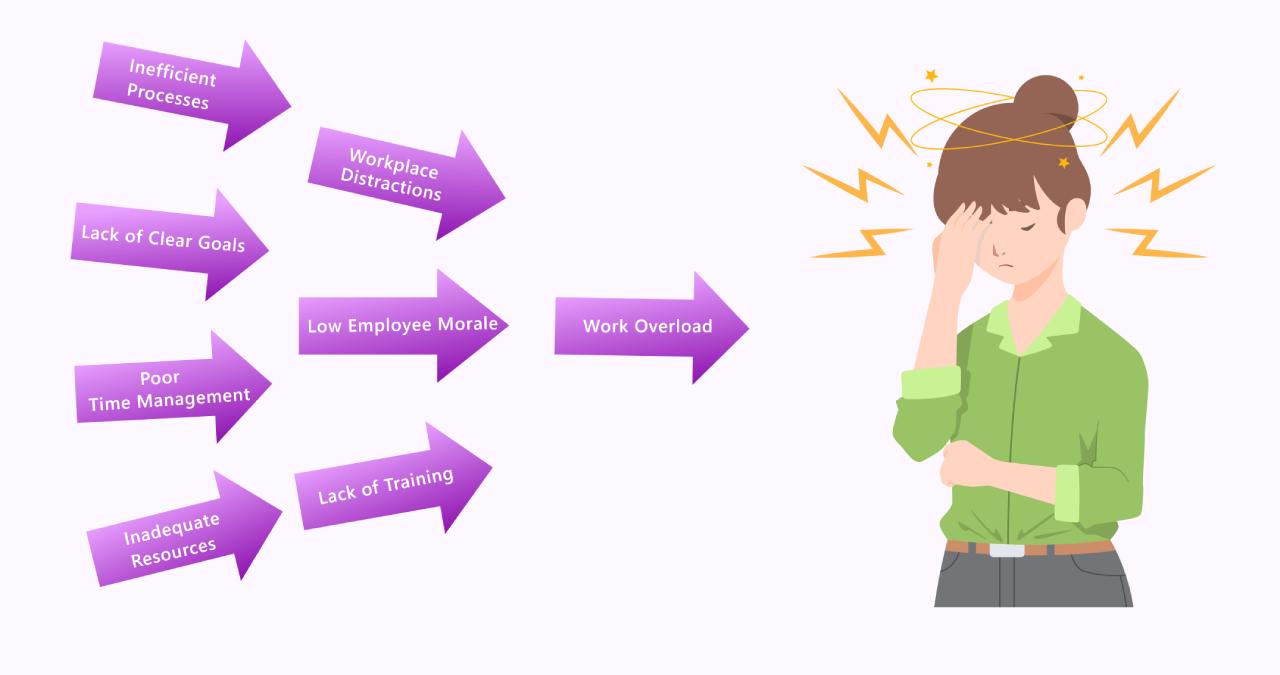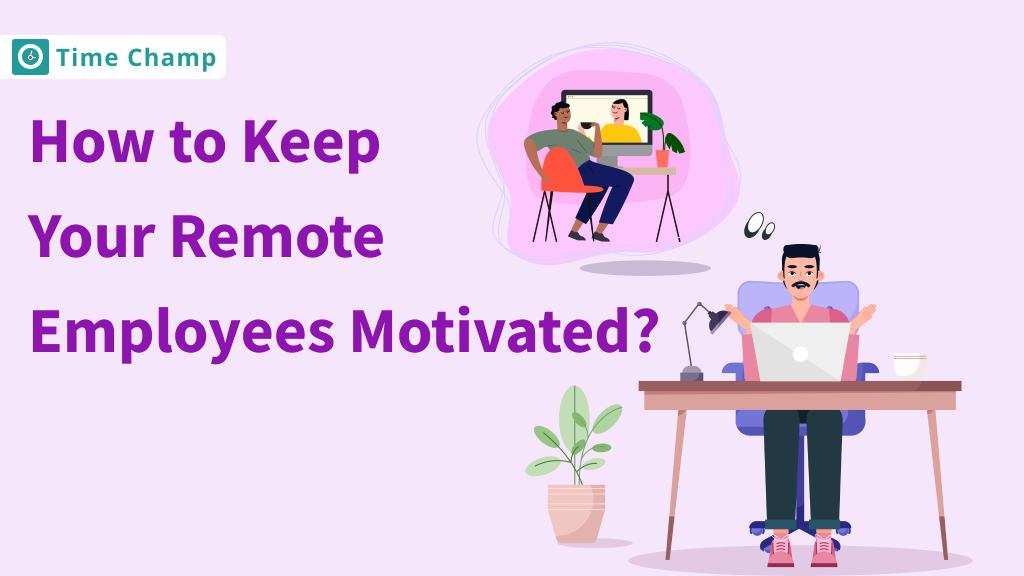How often does it happen that you and your team find yourselves struggling to reach your goals despite the efforts put in? Especially while being an HR manager and realizing that there are so many managers in your organization who might as well be going through this very same phase regularly.
Imagine their frustration and anxiety.
Well, let’s discover all the possible causes of low productivity, to help you help your people!
Causes of Low Productivity
Let’s dive into the first step toward addressing low productivity by identifying its causes.

1. Inefficient Processes: When the processes are complicated and outdated, even the simple tasks seem like a chore. Lack of clarity in these processes results in a waste of time as the team spends more time on non-essential activities rather than focusing on the essential work that needs to be done.
2. Lack of Goals and Objectives: Lack of goals in the team means that the team members are lost, they will spend a lot of time on something that does not matter. This confusion leads to low morale and productivity levels.
3. Poor Time Management: When team members cannot manage their work properly, then schedules are not met, work accumulates, and tension increases. It is important to teach the teams about how to manage their time effectively, such as prioritizing tasks, grouping similar tasks, and setting limits on how much time they spend on a particular task.
4. Inadequate Resources: Consider the possibility of attempting to work on a project with the appropriate software or hardware. Ensure that the team is equipped with the right tools, trained in the right way, and has all the resources it requires.
5. Workplace Distractions: Distractions at work are a productivity challenge. They interfere with focus, disrupt concentration, and make employees feel like they are spending time on things that don’t matter instead of getting work done.
6. Employee Morale: Illustration of coming to work each day feeling invisible, unvalued, or unmotivated.
Well, how to maintain morale?
Appreciate the team, spread good energy at the workplace, and provide opportunities to develop. That is the secret of ensuring that everyone is happy and performing to the best of their abilities.
7. Lack of Training and Development: When team members do not receive the training and development they require to perform their duties effectively, tasks become challenging, errors are made, and productivity declines.
8. Work Overload: Flooded with work that never seems to end and no way out. Having too much work feels like trying to fit too many things into too small a space. It burdens the team, leading to employee burnout and leaving productivity struggling behind.
Addressing these productivity challenges will help your organization build an environment in which the team can grow, work is completed effectively, and productivity increases.
How Low Productivity Impact Business?
The consequences of low productivity in a business can be severe.
Here’s how it can impact an organization:
1. Financial Losses: When productivity is low, work is done at a slow pace, and the cost of labour is high. This has a direct effect on the profitability of the organization since it affects the total revenues.
2. Competitive Disadvantage: Consider the position of the organization in the market. If its processes are not as efficient as those of its competitors, then it becomes an issue. This inefficiency affects innovation because the organization is left to handle current problems instead of focusing on the future.
3. Employee Morale and Retention: Low employee morale implies that the team is overworked, and this results in stress and dissatisfaction. Unhappy employees are likely to quit, thus making the work of HR a continuous process of recruiting and training new employees.
4. Quality and Customer Satisfaction: Low productivity leads to errors, which has a direct impact on the quality of products and services offered.
And you know what that leads to?
Unhappy Customers. Delays and unsatisfactory services can disappoint them, leading to dissatisfaction and possibly loss of loyalty.
5. Reputation Damage: Low productivity over time is detrimental to the business and its reputation. It makes it difficult to attract customers and skilled employees to the business. Customers need quick service, and employees need productive environments. When productivity is low, both groups may seek other opportunities elsewhere, which is not good for the business.
These low productivity issues should not be ignored and must be addressed as they are a major concern.
Effective Ways to Overcome Low Productivity?
Here are some tips that can help you increase productivity:
1. Streamline Processes: Examine the current processes and try to improve them. Find out areas of inefficiency and eliminate them. It is important to stop creating obstacles for the team and to eliminate unnecessary issues as well.
2. Improve Time Management: It is important to educate the team on time management strategies. Teach how to prioritize tasks, how to categorize them, and how much time should be spent on each task to ensure that productivity is optimized.
3. Provide Adequate Resources: Ensure that your team is equipped with all the resources that are required. Regarding software, hardware, or training. Make sure that they are ready to perform their tasks efficiently.
4. Boost Employee Morale: Show some appreciation! Appreciate your team for the efforts they have put in. It is important to recognize even the slightest attempts to ensure that they do not lose morale.
5. Enhance Communication: Keep communication channels open. Ensure that all the people involved in the project are aware of the progress, objectives, and expectations.
6. Avoid Multi-tasking: Some people believe that it is efficient to do several things at once, but it lowers the quality of the work. Although it may take more time, the concentration on one task ensures that it is done to the best of one’s ability.
7. Feedback: Feedback is essential. The feedback given by managers assists the employees in realizing their performance and the aspects that need to be worked on. This guidance enables the employees to change their behavior and improve their performance.
Short naps during working hours are allowed in some organizations such as Google because they can help increase productivity.
Boost Productivity with the Right Tools
Time Champ:
Time Champ is an employee productivity software. It demonstrates how time is spent and assists both employees and managers in identifying how time can be conserved. It can be used to track working hours, for project management, and for monitoring the progress in real time. Time Champ has features such as auto time tracking, comprehensive reports, and tasks to guarantee the right time. Time Champ helps your organization to achieve its objectives by enhancing accountability and productivity.
Communication Tools:
1. Slack: Slack is a business communication application that enables teams to collaborate through messaging. It unites the discourses related to specific tasks, which helps to avoid time spent searching for the necessary information. Slack has a feature that enables the sharing of documents and files for fast transfer of information. Slack makes work more productive by centralizing communication and promoting collaboration.
2. Troop: Troop Messenger is an instant messaging software that has the following features that can be beneficial for the team. Some of the features of Troop Messenger that assist in communication and interaction with the team include Screen Sharing, Video Calls, Burnout, Workout, Recall, and Delete. By making communication easier and enabling fast decision-making, Troop Messenger helps teams to be more productive thus improving productivity.
Conclusion
Low productivity leads to poor business performance, demoralized employees, and dissatisfied customers. The areas that can be changed include processes, time, motivation, and training of the employees to enhance their performance. Addressing these concerns creates a better-working climate and results in higher levels of achievement.
Revolutionize your Employee Productivity with Time Champ!
Say goodbye to low productivity and hello to peak performance. Try Time Champ today!
Sign up for FreeBook a Demo






